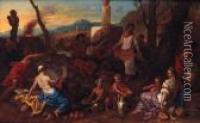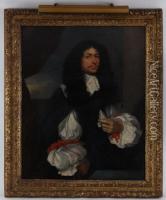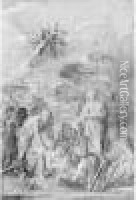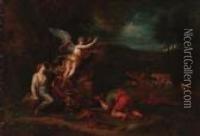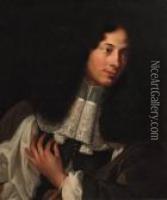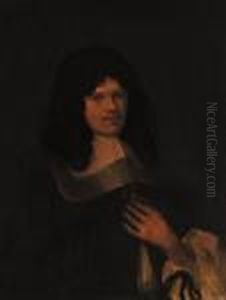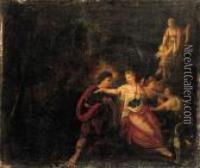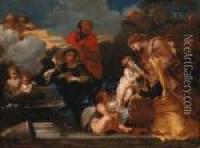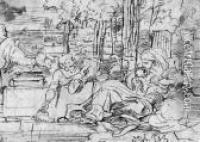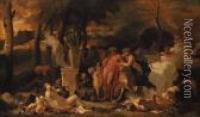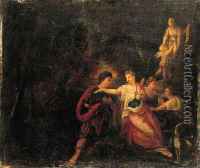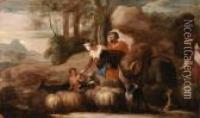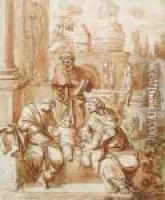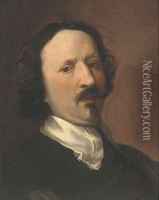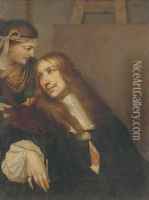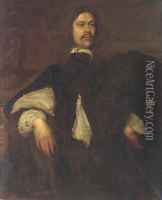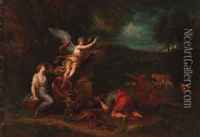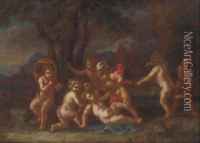Sebastian Bourdon Paintings
Sebastian Bourdon was a French painter and engraver, whose work is often associated with the Baroque movement. He was born on February 2, 1616, in Montpellier, France, into a Protestant family. Despite the religious turmoil of the time, which often affected Huguenots, Bourdon managed to develop his artistic talents and became one of the leading French artists of his era.
Bourdon's early years as an artist included a period of travel in his late teens, during which he went to Rome. There, he was influenced by the works of the masters of the Italian Renaissance and Baroque periods. His experiences in Italy helped to shape his style, which incorporated the grandeur and drama characteristic of Baroque art, but also sometimes displayed a certain idiosyncratic and eclectic manner.
After returning to France, Bourdon worked in Paris, and for a short period, he was commissioned by Queen Christina of Sweden. His career in France was not without difficulties, as his Protestant faith sometimes hindered his opportunities in what was predominantly a Catholic country. Nevertheless, he was appointed as a court painter by King Louis XIV and became a founding member of the Académie Royale de Peinture et de Sculpture in 1648.
Bourdon's oeuvre is diverse, including history paintings, landscapes, still lifes, and portraits. One of his most notable works is 'The Crucifixion of St. Peter' (1657), which is on display at the Louvre Museum in Paris. His style is known for its dynamic compositions, skillful use of light and shadow, and a certain expressive quality that was ahead of his time.
Despite his success, Bourdon's life was marked by periods of financial insecurity and personal struggles, particularly relating to the political and religious conflicts of his day. He died on May 8, 1671, in Paris. Today, Sebastian Bourdon is remembered as a significant figure in French Baroque painting, with his works highly regarded for their originality and craftsmanship.
